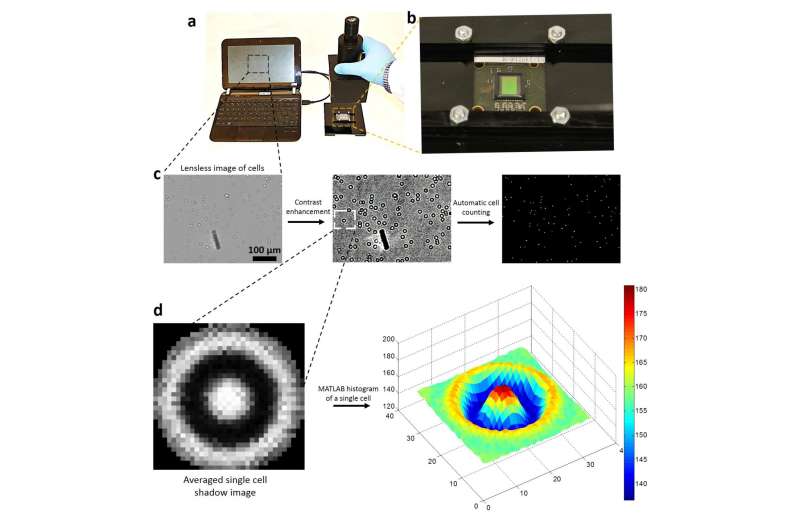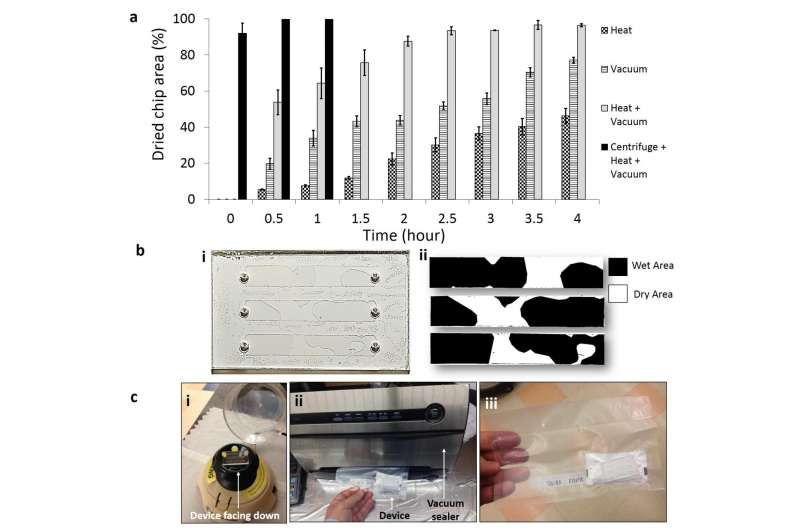New method to preserve microfluidic devices for HIV monitoring in developing countries

Providing vital health care services to people in developing countries without reliable electricity, refrigeration and state-of-the-art medical equipment poses a number of challenges. Inspired by pregnancy tests, researchers from Florida Atlantic University, Stanford University, and Baskent University in Turkey, have developed a novel method to store microfluidic devices for CD4 T cell testing in extreme weather conditions for up to six months without refrigeration.
Microfluidic devices with immunochemistry have broad applications in chemotherapy monitoring, transplant patient monitoring, and especially in monitoring the efficacy of antiretroviral therapy.
Results of this study were recently published in Scientific Reports, "Engineering Long Shelf Life Multi-layer Biologically Active Surfaces on Microfluidic Devices for Point of Care Applications."
"Monitoring HIV patients at point-of-care settings in resource-constrained countries like Africa is critical in knowing how their treatment is progressing and whether or not a particular drug is working the way it should be," said Waseem Asghar, Ph.D., co-first author on the study and assistant professor of electrical engineering in the College of Engineering and Computer Science at FAU.
This research also has employed a lensless imaging method to rapidly count CD4 T cells using CMOS (complementary metal-oxide semiconductor) sensor - the same imaging sensor found in cell phone cameras. Lensless imaging technology allows rapid cell counting and does not require skilled technicians to operate, making it suitable for point-of-care settings. If produced at a large scale, the microfluidic device would cost less than $1 compared with the current cost of a CD4 assay which is about $30-$50.

"Similar to pregnancy tests that can be stored at room temperature, we investigated methods to store and preserve multi-layer, immuno-functionalized microfluidic devices in refrigeration-free settings for applications in resource-limited settings at the point-of-care," said Utkan Demirci, Ph.D., senior author of the paper, Stanford University School of Medicine.
Current microfluidic devices used for biomedical applications to test for various diseases and conditions including HIV and cancer need to be stored at low temperatures (4 to 8 degrees centigrade) to prevent the degradation of antibodies. In addition, transporting these biomaterials is expensive and increases the assay costs.
Asghar and his colleagues used trehalose, a form of sugar that is present in some plants and animals, to preserve the microfluidic device. Since trehalose has the capability to enable plants to thrive in very harsh hot and cold conditions, they determined that it could have the same effect on multi-layer surfaces like a microfluidic device. They packaged and vacuum sealed the trelahose treated device in plastic and used a drying agent to address the effects of humidity. They exposed the device to extreme weather conditions in a laboratory environment to test its functionality and shelf-life.
Results of the study revealed that they were able to preserve the microfluidic devices over a period of six months using this method. At room temperature, they observed 90 percent specificity for up to six months.
The researchers also integrated these stabilized microfluidic devices post-reactivation with the CMOS lensless imaging technology. The captured CD4 T cells were counted rapidly and automatically from unprocessed whole blood, creating a portable, battery-operated, inexpensive, and microscope-free CD4 T cell counting platform with a long shelf-life.
"This technology also is widely applicable to global health applications when resources are limited to address viral load, sepsis, tuberculosis, malaria, as well as cancer detection. It also offers advantages in the developed world in settings such as in a primary care physician's office or in the home setting," said Asghar.
More information: Waseem Asghar et al. Engineering long shelf life multi-layer biologically active surfaces on microfluidic devices for point of care applications, Scientific Reports (2016). DOI: 10.1038/srep21163
Journal information: Scientific Reports
Provided by Florida Atlantic University





















